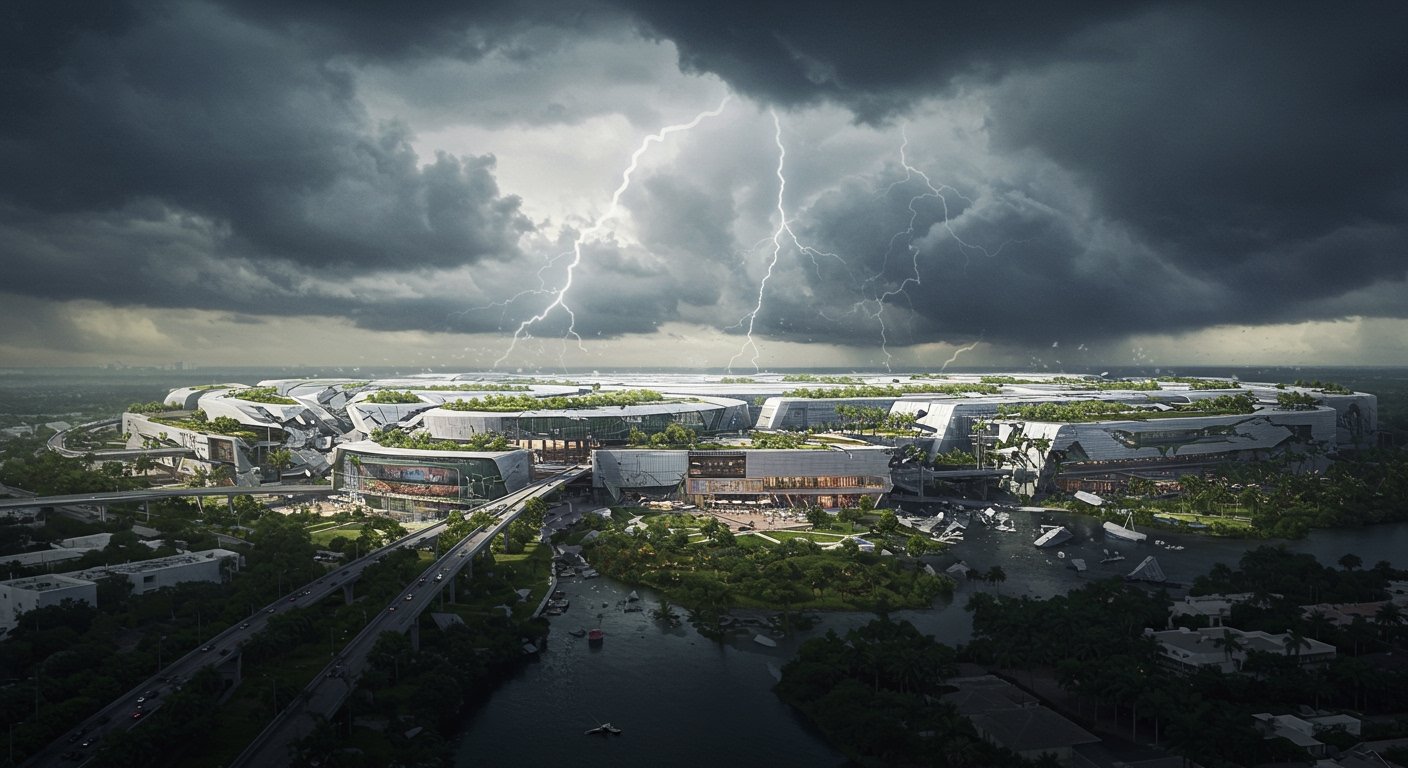Developers behind the ambitious proposed Miami mega mall project, a development envisioned to significantly reshape the region’s economic and urban landscape, are reportedly seeking to change terms they had previously agreed upon. This move, which introduces a layer of complexity and uncertainty into the future of the massive undertaking, has drawn sharp commentary, including from the editorial board of the Miami Herald.
The situation centers on the intricate agreement governing the project, a deal reached after extensive negotiation and presumably intended to lay a clear path forward. Such large-scale development agreements typically involve numerous provisions covering aspects ranging from public infrastructure contributions, timelines, environmental considerations, and financial commitments, all designed to ensure the project aligns with public interests and regulatory requirements while providing a framework for the developers.
The Agreed Terms and Subsequent Request
Sources familiar with the situation indicate that the developers had, at an earlier stage, come to terms regarding the parameters of the Miami mega mall deal. Reaching such an agreement is often a crucial milestone, signifying alignment between the project proponents and the governing body – in this case, the county – with jurisdiction over the site and necessary approvals.
However, the developers have now reportedly initiated efforts to change these terms. The specific nature of the requested alterations has not been detailed publicly in the initial reports, but the mere act of seeking to modify a previously agreed-upon framework for such a significant project is notable and raises questions about the project’s stability and the developer’s commitment to the original conditions.
An Editorial’s Critical Viewpoint
The Miami Herald editorial board addressed this development in a recent piece, characterizing the developers’ request for assistance from the county as a “Hail Mary” effort. This pointed phrase suggests a perception that the developers’ move is a last-ditch attempt to rescue or push forward a project that, in the editorial board’s assessment, appears to be facing significant challenges.
The editorial’s use of the term “Hail Mary” implies a degree of desperation or perhaps a long-shot approach to overcome obstacles. This characterization by a prominent local media outlet adds a critical voice to the public discourse surrounding the mega mall project and suggests potential underlying difficulties that are prompting the developers to revisit the fundamental terms of their agreement.
Furthermore, the editorial board’s perspective suggests that the project appears “increasingly less feasible.” This assessment, if accurate, could stem from a variety of factors common to large development projects, such as shifts in market demand, difficulties securing necessary financing, rising construction costs, unforeseen environmental issues, or complexities in navigating regulatory processes. While the editorial itself may not have detailed the specific reasons for this perceived decrease in feasibility, the statement underscores a growing concern about the project’s ultimate viability.
Implications of Changing Terms
Seeking to alter agreed terms on a major deal carries significant implications. For the county, it necessitates a review process to evaluate the proposed changes against the public interest and the initial rationale for approving the project under the original terms. It also raises questions about the precedent such changes might set for future development agreements.
For the developers, requesting changes after an agreement is reached can signal challenges, potentially related to financial viability, market conditions, or unforeseen complexities. It can also potentially erode confidence among stakeholders, including the county government, potential investors, and the public, who had understood the project was moving forward under a specific set of conditions.
Large-scale projects like the proposed Miami mega mall often involve complex public-private partnerships or agreements where the county provides approvals or support in exchange for certain public benefits or adherence to specific requirements. Unraveling or altering these agreements post-facto can be a complicated process, requiring renegotiation and potentially revised public scrutiny.
Context of Miami Development
Miami has a history of ambitious development proposals that aim to transform its skyline and economy. Projects of this magnitude often face intense scrutiny regarding their potential impact on traffic, environment, existing infrastructure, and community character. The process of getting such projects from concept to reality is typically fraught with challenges, involving numerous permitting stages, public consultations, and securing substantial financial backing.
The Miami mega mall project has been a subject of public debate since its inception, with discussions often centering on its potential economic benefits versus its potential strains on infrastructure and quality of life. The county’s role in facilitating or regulating such developments is critical, balancing the desire for economic growth with the need to manage the impacts on the existing community and environment.
An editorial from a newspaper like the Miami Herald serves as a significant voice in local civic discussions. Editorial boards synthesize information and public sentiment to offer a perspective that can influence public opinion and inform policymakers. Their characterization of the developers’ request as a “Hail Mary” and their assessment of the project’s feasibility highlight concerns that are likely shared by other observers of the development landscape.
Moving Forward
The path forward for the Miami mega mall project now hinges on the outcome of the developers’ request to change the agreed terms and the county’s response. The county administration and potentially the county commission will need to evaluate the merits of the requested changes, consider the reasons presented by the developers, and determine whether modifying the original agreement is in the best interest of the public.
This situation underscores the dynamic and often unpredictable nature of major real estate developments. Even after terms are agreed upon, unforeseen circumstances or shifting strategies can lead parties to seek modifications, introducing periods of uncertainty.
The Miami Herald editorial serves as a clear indication that this move is being watched closely and critically. The assessment that the project’s feasibility is decreasing, coupled with the characterization of the request as a last-ditch effort, paints a challenging picture for the future of the proposed Miami mega mall as it currently stands.
The coming weeks or months will likely reveal more details about the developers’ specific requests and the county’s process for evaluating them. Until a resolution is reached, the future of the Miami mega mall deal remains in question, subject to the outcome of these crucial negotiations and the ongoing assessment of the project’s viability by stakeholders and observers alike.





